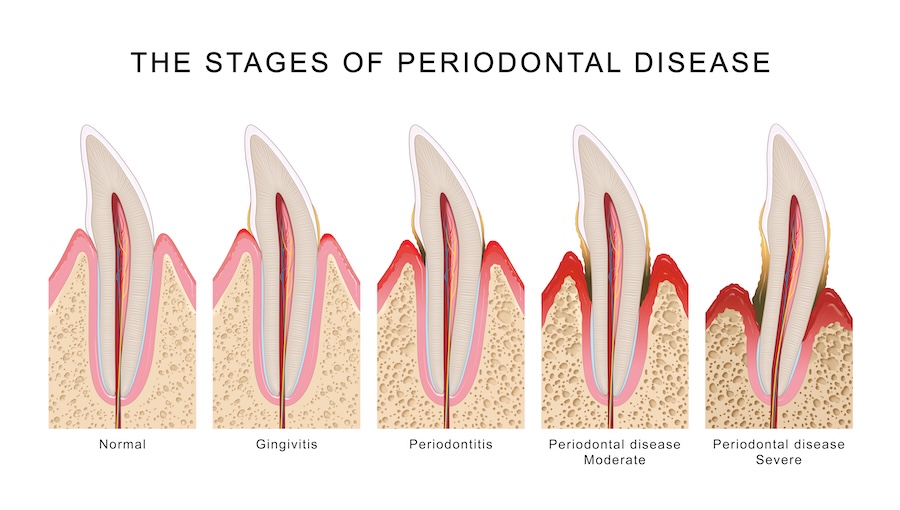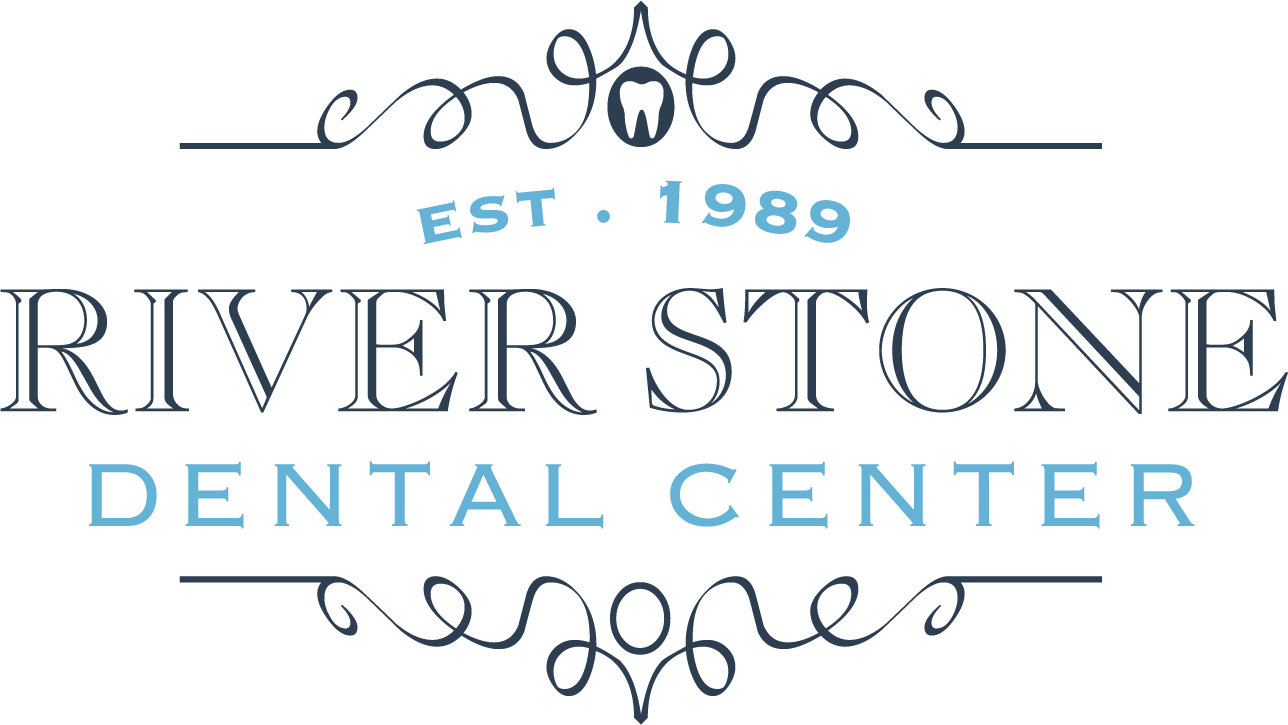
Gum disease doesn’t happen overnight. It starts quietly—often without pain—and gradually damages the tissue and bone that support your teeth. At River Stone Dental Center in Germantown, MD, Dr. Peajmun Razmjou helps patients recognize the stages of periodontitis and take action before the damage becomes irreversible.
Stage 1: Gingivitis
This early stage of gum disease affects only the soft tissue. Plaque buildup along the gum line leads to inflammation. Gums may look red, feel swollen, or bleed when you brush or floss. There’s typically no bone loss at this point, and probing depths are usually 3-4 mm or less.
Gingivitis is reversible with daily brushing, flossing, and a professional dental cleaning. But if left untreated, it can progress to more serious stages.
Stage 2: Early Periodontitis
As inflammation spreads, gum pockets begin to form. These spaces between the teeth and gums trap bacteria, making it harder to clean. You might notice bleeding gums, bad breath, or mild tenderness.
Probing depths are usually 4–5 mm, and early bone loss may be visible on dental X-rays. At this stage, Dr. Razmjou may recommend scaling and root planing (deep cleaning) and monitor healing closely.
Stage 3: Moderate Periodontitis
The infection now affects deeper tissues and starts damaging the bone that anchors your teeth. You may feel that your bite is shifting, or teeth are becoming loose. Gums may recede, and you might experience occasional discomfort when chewing.
Probing depths typically increase to 6–7 mm, with moderate radiographic bone loss. In addition to deep cleanings, laser gum therapy may be recommended. This treatment targets infected tissue and bacteria with precision, helping to reduce inflammation and promote healing—often with less discomfort than traditional methods.
Stage 4: Advanced Periodontitis
In this final stage, tooth support becomes severely compromised. Teeth may feel mobile, painful, or appear longer due to gum recession. Pus at the gum line, persistent bad breath, and visible bone loss are common.
Pocket depths are often 7 mm or more, and X-rays show significant bone loss. Treatment may include laser-assisted procedures, surgical intervention, or—in some cases—tooth extraction. The focus is on halting progression and preserving as much healthy tissue as possible.
Periodontal Disease and Your Overall Health
Periodontitis isn’t just a mouth issue. Studies have shown strong links between gum disease and heart disease, stroke, diabetes, and even cognitive decline. Chronic oral inflammation can affect the immune system and increase the body’s overall inflammatory burden.
Treating gum disease can lower these risks, which is why keeping your gums healthy is about more than just your teeth—it’s a step toward protecting your entire body.
Gum Disease Treatment at River Stone Dental Center in Germantown, MD
At River Stone Dental Center in Germantown, MD, Dr. Peajmun Razmjou uses both traditional and advanced techniques, including laser gum therapy, to treat gum disease at every stage. Whether you’re managing early symptoms or more advanced damage, your care plan is tailored to your needs—with a focus on comfort and long-term results.
If you’ve noticed bleeding gums, bad breath, or shifting teeth, don’t wait. Schedule an appointment today and take the next step toward healthier gums, a stronger smile, and better overall health.
Contact Us
